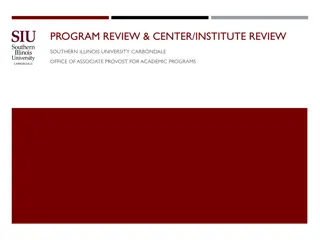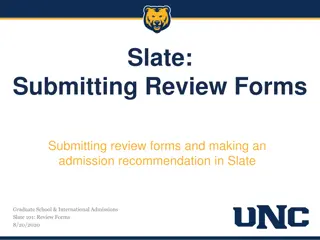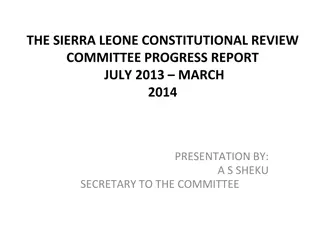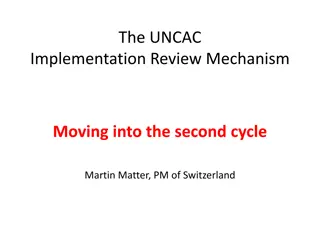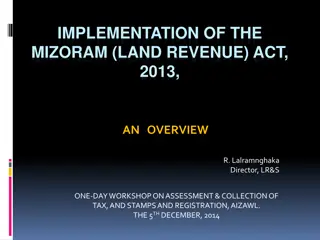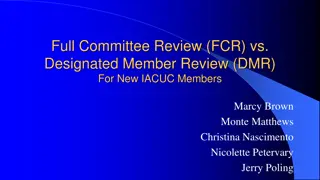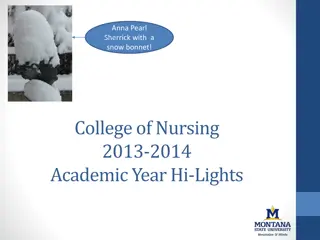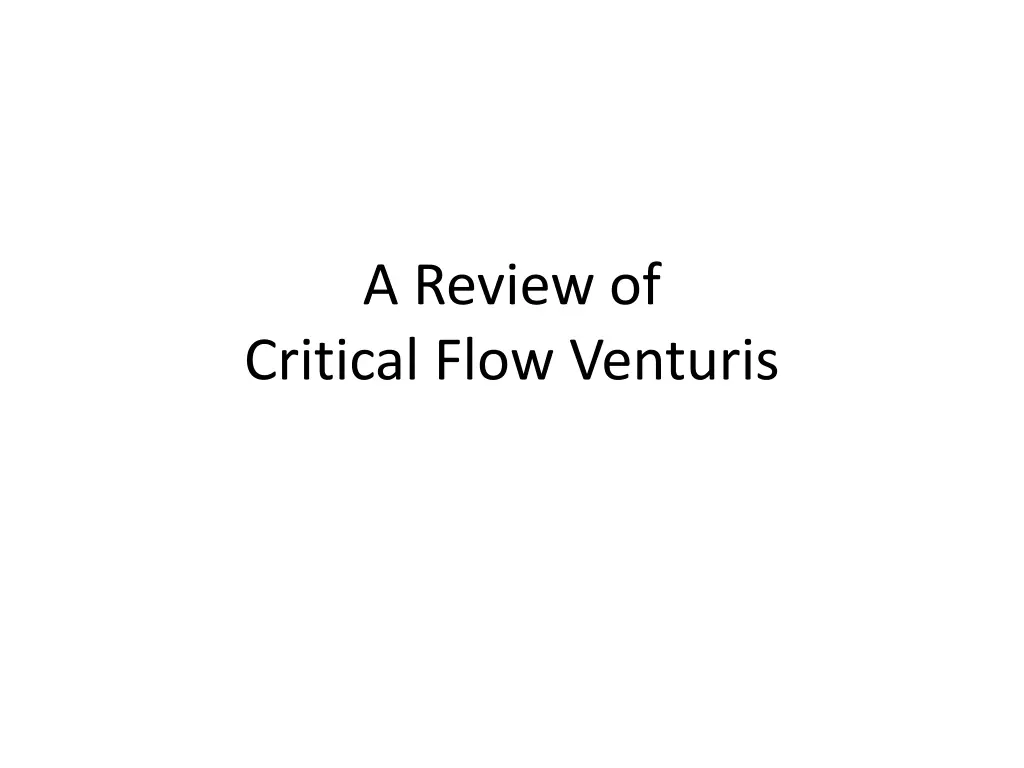
Review of Critical Flow Venturis and Related Concepts
Explore critical flow venturis, sonic nozzles, discharge coefficients, isentropic flow, inviscid core flow, velocity boundary layer, Reynolds number scaling, and more in this detailed review of fluid dynamics concepts and applications.
Download Presentation

Please find below an Image/Link to download the presentation.
The content on the website is provided AS IS for your information and personal use only. It may not be sold, licensed, or shared on other websites without obtaining consent from the author. If you encounter any issues during the download, it is possible that the publisher has removed the file from their server.
You are allowed to download the files provided on this website for personal or commercial use, subject to the condition that they are used lawfully. All files are the property of their respective owners.
The content on the website is provided AS IS for your information and personal use only. It may not be sold, licensed, or shared on other websites without obtaining consent from the author.
E N D
Presentation Transcript
A Review of Critical Flow Venturis
Sonic Nozzles * R M AP C = 0 m = mth Aa th RT 0 PM c = = p a RT c zRT v
Discharge Coefficient Cd 0.992 0.99 0.988 0.986 0.984 Cd 0.982 0.98 m 0.978 PS 0.976 0 50000 100000 150000 200000 Re m = PS C d m 0.992 th 0.99 0.988 0.986 0.984 Cd * R M AP C 0.982 = 0 m 0.98 th y = -4.5881x + 1.0002 RT 0.978 0 0.976 0.002 0.0025 0.003 0.0035 0.004 0.0045 0.005 Re-1/2
Isentropic, 1-Dimensional Flow, Perfect Gas Velocity at each cross section of a convergent- divergent critical venturi (Reynolds 1886, Rayleigh 1916) 1 + 1 2 1 ( ) 2 + 1 ( ) , 1 , Ma A f = = ( ) 1 + * 1 f A 2 1 ( ) 2 + 2 1 Ma Ma
Isentropic, 1- Dimensional Flow, Perfect Gas, Fully Expanded (no shocks) T T 0 = T ( . 0 75 ) R aw P P 0
Inviscid Core Flow Smith and Matz 1962, A non-one- dimensional flow exists because of the centrifugal forces created by the turning of the flow in the contraction section. 1-D: 2-D: Hall 1962, Kliegel and Levine 1969 0.12 % = + 3 2 4 1 C where 2, 3, and 4 are gas species dependent components and is the expansion parameter (R or 1 + R). core d, 2 3 4
Velocity Boundary Layer: Cd scales with Re-1/2 1 7208 . x Blasius: boundary layer on a flat plate = Re x Laminar: Tang 1969, Geropp 1971, similarity transformations Turbulent: Stratford 1964, integral boundary layer technique Mickan 2006 Transition at Re 1 x 106 where = r*/R is the throat curvature ratio (nominally 0.25 for an ASME / ISO venturi), a1 and a2 are coefficients, and m and n are exponents whose values depend on whether the flow is laminar or turbulent. = + 2 2 m n m n 1 Re Re C a a d, bl 1 2
Reynolds Number Scaling 1.000 1.000 1.000 0.995 0.995 0.995 0.990 0.990 0.990 0.985 0.985 0.985 mexpt / m2 mexpt / m2 = Cd 0.980 0.980 mexpt / m2 0.980 0.975 0.975 0.975 0.970 0.970 0.970 0.965 0.965 0.960 0.960 0.965 0.955 0.955 0.960 0.01 0.1 1 10 100 1000 0.955 0.0E+00 5.0E+05 mexpt (g/s) 1.0E+06 1.5E+06 2.0E+06 2.5E+06 0.000 = 0.002 + 0.004 1 0.006 0.008 Re 0.010 0.012 0.014 2 / Re-1/2 Re C d
Boundary Layer Transition Ishibashi and Arnberg, The Effect of Inlet Geometry on the Critical Flowrate of Toroidal Throat Venturi Nozzle, CFVN Workshop, Quedlinburg, Germany, June, 2005
Analytical Cd predictions agree well with experiments Johnson and Wright 2008 Mickan 2006
Gas Species Effects Solid lines from Nakao and Takamoto, Discharge Coefficients of Critical Flow Venturi Nozzles for CO2 and SF6, Transactions of the ASME, December, 2000, d = 0.295 to 2.36 mm. Points from NIST experiments, d = 0.387 mm.
Cd can be treated as numerous uncoupled physical phenomena Cd = CR*CinvCvblCTblC Cvib + higher order terms





